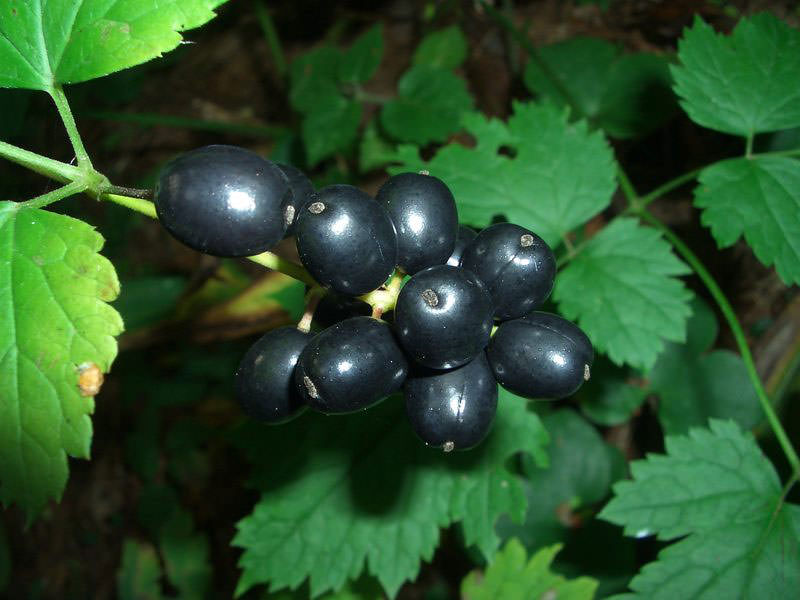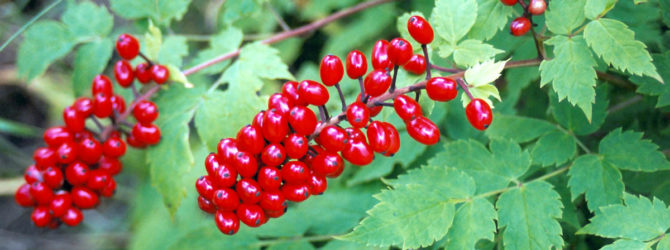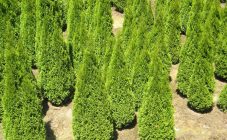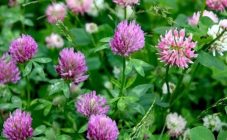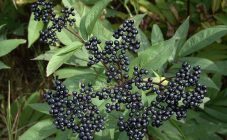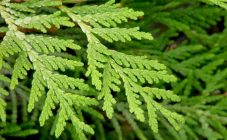Content:
Many gardeners consider it popular to plant a raven plant. In the summer, it is unnoticeable, but by the fall red, black or white berries appear, which give the bush a unique decorative look.
Description of culture
What does a raven look like
The plant reaches a height of 1 meter. It is considered a perennial and herbaceous crop belonging to the Buttercup family. The leaves grow large, tripartite. The color is rich green. Lush bush. Flowering begins in early summer. The buds are small, white or red, not very attractive in appearance. The most spectacular thing about this plant is its fruits, which appear towards the end of summer. Bright berries come in a variety of colors. They are shaped like a ball, the size of a pea. The raven berry grows on a long stem.
Other name
In Latin, its name is Actaea, which comes from the Greek word for "elder". The plant looks like a black chokeberry bush. The berries are also called by leaflets for botanical reasons, and the raven is a sweet berry.
Where grows
It grows on clay and stony-clay slopes, in coniferous and mixed forests, humid valleys with a temperate climate in Europe, Asia, North America. In Russia, it is found in Western Siberia and the Caucasus.
Varieties of herbs
About 30 species belong to the Vorontsa flower genus. Their height ranges from 30 to 90 centimeters. Thanks to the developed rhizome, the raven can grow for about 12 years. Its leaves are dissected, the stem is erect. The flowers are small and inconspicuous, representing long fluffy clusters of inflorescences. The fruits are poisonous, colored black, white or red.
Kinds:
- Pointed - found in forests, in flower beds. The leaves are sharp, the fruits are large (up to 7 mm), black.
- Voronets is red-fruited, description - light-colored leaves, branched brushes, red fruits. The herb and roots contain alkaloids that are used for healing.
- White raven - berries are large and light, watery. A very beautiful shrub, often used for decorative purposes. The berries are highly poisonous, so you need to be careful when growing. The plant is frost-resistant. Propagated by dividing the bush.
- Spike-shaped - the inflorescences have a decorative appeal, the stem is erect, the rhizome is thick, the leaves are large, have jagged segments along the edges, the berries are black.
- Daurian crow is a herb for open ground, perennial, up to 1.5 meters high. It repels bedbugs with its unpleasant smell. The rhizome is thick, multi-headed. The foliage is long-petiolized. The flowers are small, white, inconspicuous, with a pleasant smell. The place of growth is Dauria. The variety is frost-resistant. Suitable soils are loamy, rich in humus.
Growing
To breed Voronets, divide the bush.It is best to carry out all procedures in early spring. Frequent changes of location and planting are unacceptable, since the plant will take a long time to recover. With proper care, the raven grows quickly. It needs to be weeded, watered and mulched regularly.
Spiked ravens are propagated by seeds due to weak vegetation, they are kept at a temperature of 1-3 degrees for better germination. The process takes about 3 months. Next, the seedlings are grown in a warm room.
Already grown bushes do not particularly need constant attention. Watering is necessary only during drought. When a raven grows under trees, it receives nutrients from rotted fallen leaves.
Under natural conditions, Vorontsa reproduces by seeds. They are carried by birds and animals. They germinate for a very long time, about two years. After 4 years, the plant begins to bloom.
The raven is a frost-resistant plant. It is not required to cover it in winter.
Collection and procurement
Grass harvesting begins in May - June. It is dried in a shaded area under a canopy. Avoid direct sunlight.
The root part is harvested in spring or autumn. They gently undermine it, shake off the remnants of the earth well, wash it, free it from damage. The roots are cut into pieces of 8-10 centimeters and placed in a dryer. The temperature should be set to 40 degrees. You can also dry in the shade, the roots are laid out in one layer.
The leafy part with short petioles is placed on flat trays covered with a paper base and dried. The raw materials need to be turned over periodically.
Storage of products is carried out in paper bags. It is necessary to work with dry raw materials in cotton-gauze bandages.
The crow is attractive to gardeners for its decorative appearance and unpretentiousness, frost resistance, ease of care and other properties.
Diseases and pests
The plant is unpretentious. Diseases and pests do not damage it. The raven does not need to be sheltered for the winter. The biggest disadvantage is the high toxicity of the fruit. If there are small children in the garden, then it is better not to plant such a plant for design.
Cultural properties and application
Composition:
- Alkaloids;
- Vitamin C;
- Narcotic substances;
- Trans-aconitic acid;
- Saponites;
- Fixed oils.
For medicinal purposes, roots, grass, berries are used. They make decoctions, infusions, ointments.
With uterine bleeding, delayed menstruation, tuberculosis, malaria, skin diseases do:
- Decoction of rhizomes: pour 1 tsp into half a liter of water. raw materials. Boil in a water bath for 4 minutes. Insist one hour. Strain through 3 layers of gauze. Take 2 teaspoons 3 times a day.
- Herbal infusion: pour ten grams of raw materials with a glass of boiling water for about an hour, strain, take 1 tbsp. spoon 2-3 times a day.
Voronets ointments are used for skin diseases. The fruits are ground into powder. 20 grams of raw materials are added to warmed petroleum jelly or fat. Mix well and infuse for 7 days.
Application:
- As a laxative and emetic;
- For the treatment of the nervous system and general weakness;
- With asthma;
- With head and stomach pain;
- With gynecological diseases, uterine bleeding, delayed menstruation;
- With oncology of the stomach, as an antineoplastic agent;
- For the treatment of pulmonary tuberculosis;
- Malaria;
- For skin diseases;
- For the treatment of cardiovascular diseases;
- To relieve toothache;
- Pressure normalization;
- To improve sleep.
Earlier, black dye was made from Voronets.
In gardening, the plant is used to decorate the territory.
Contraindications
The crow is a poisonous plant. When it is dried, toxic substances remain in it. In case of an overdose of decoctions and tinctures, negative effects on the skin may appear: ulcers and tumors. Inflammation of the mucous membrane may also appear. Medicines from the roots of the plant can cause vomiting and respiratory failure. Treatment with Voronet herb for pregnant, lactating and young children is contraindicated. In case of poisoning, consult a doctor.
